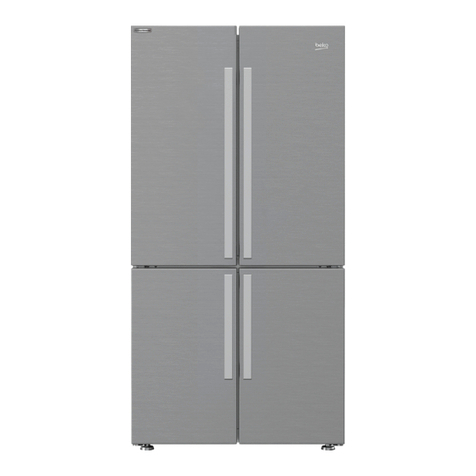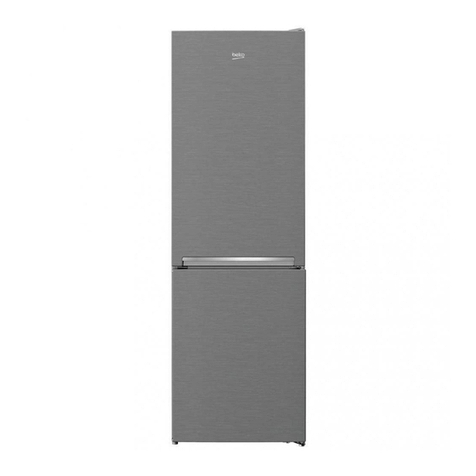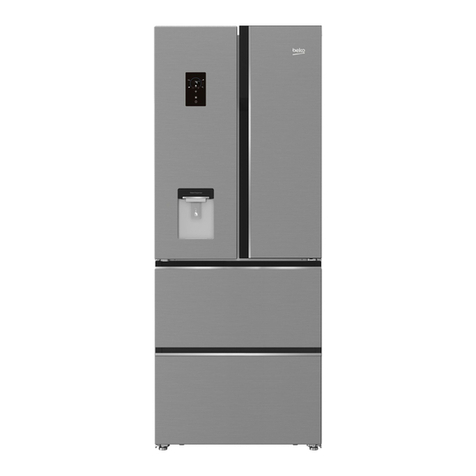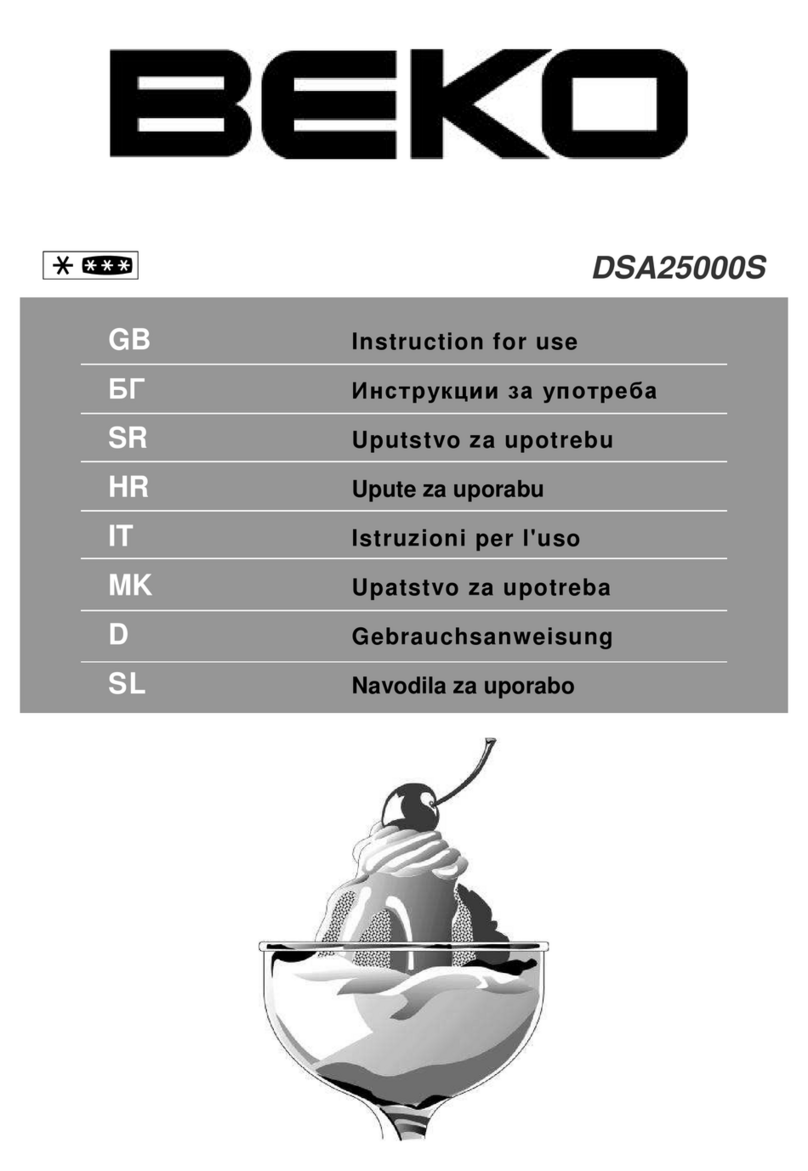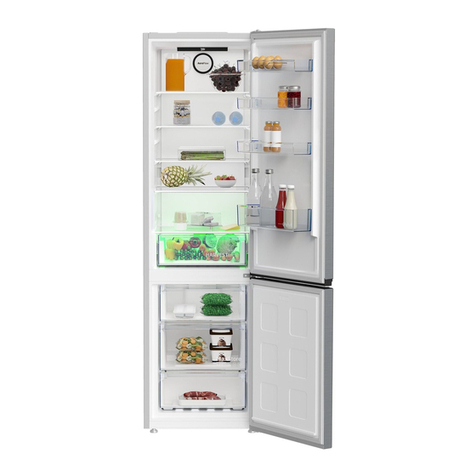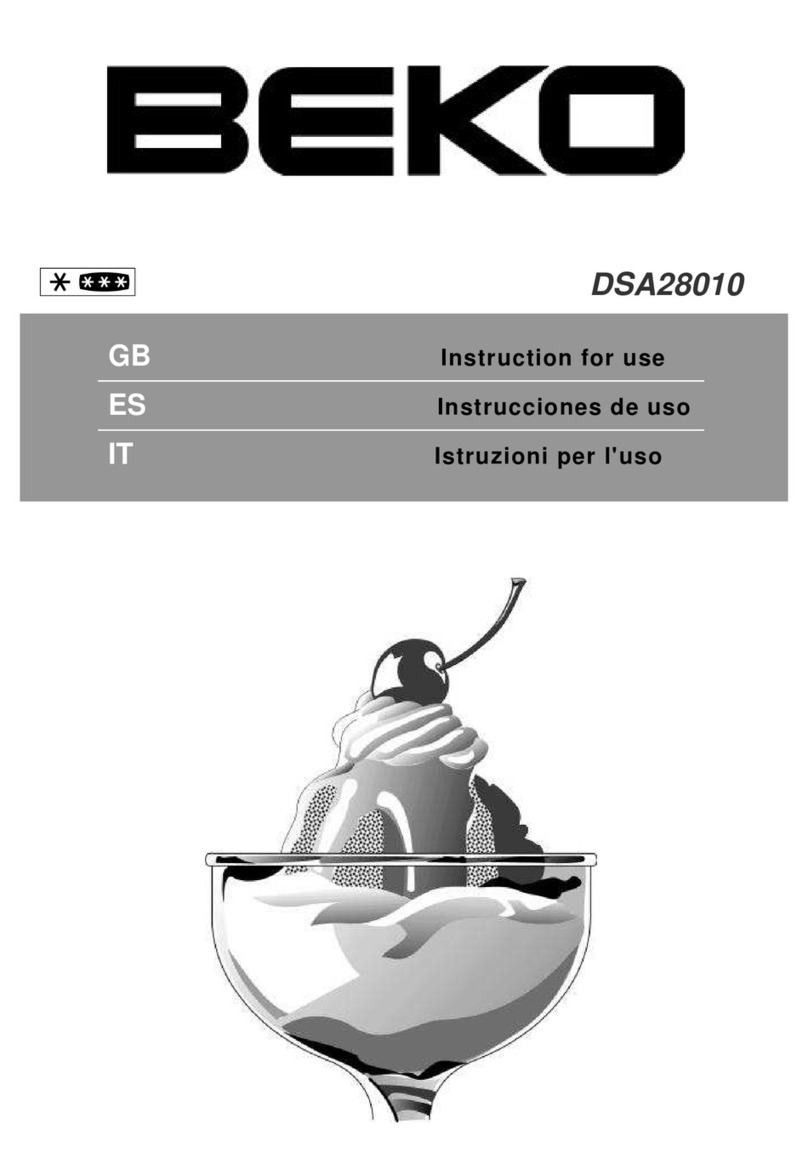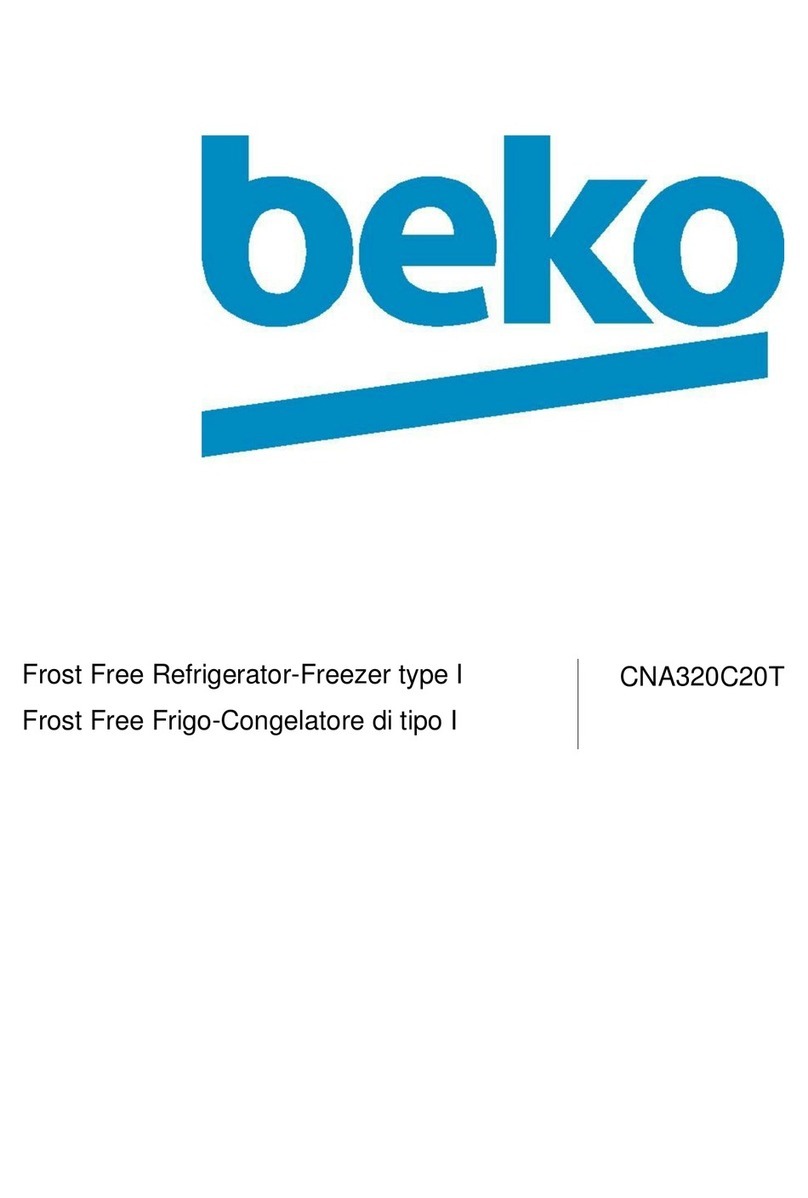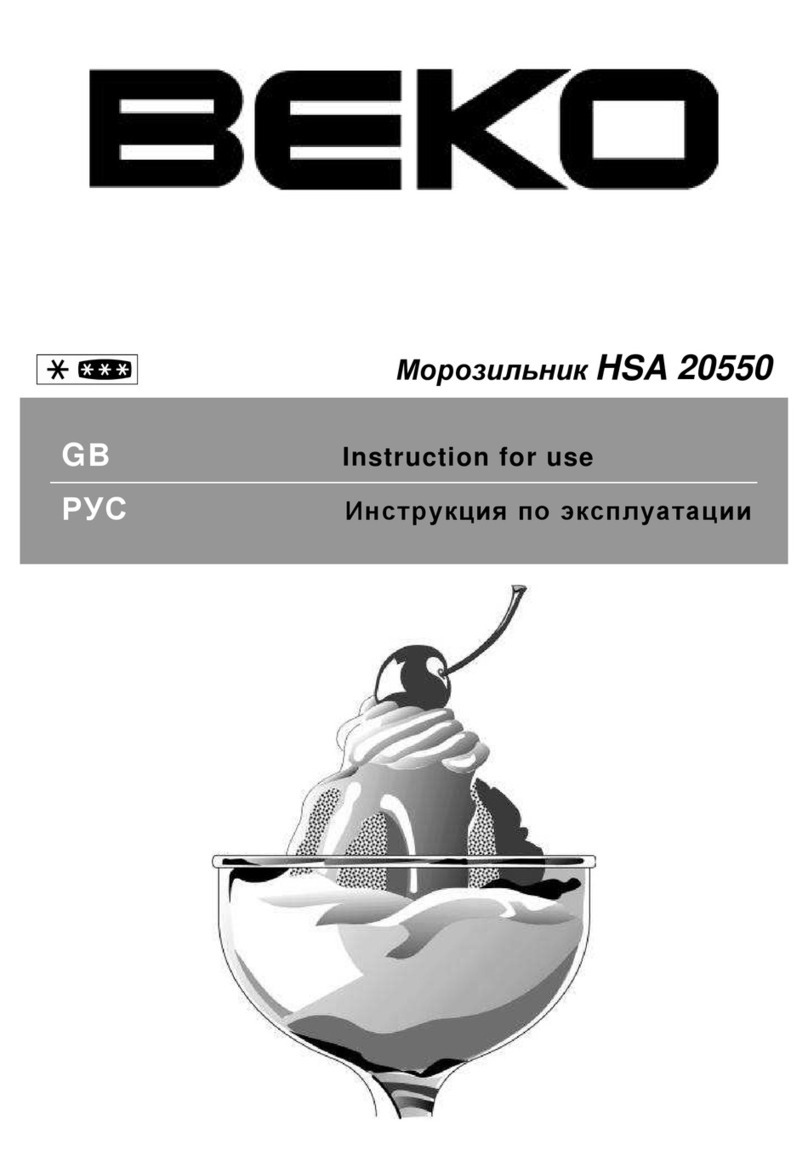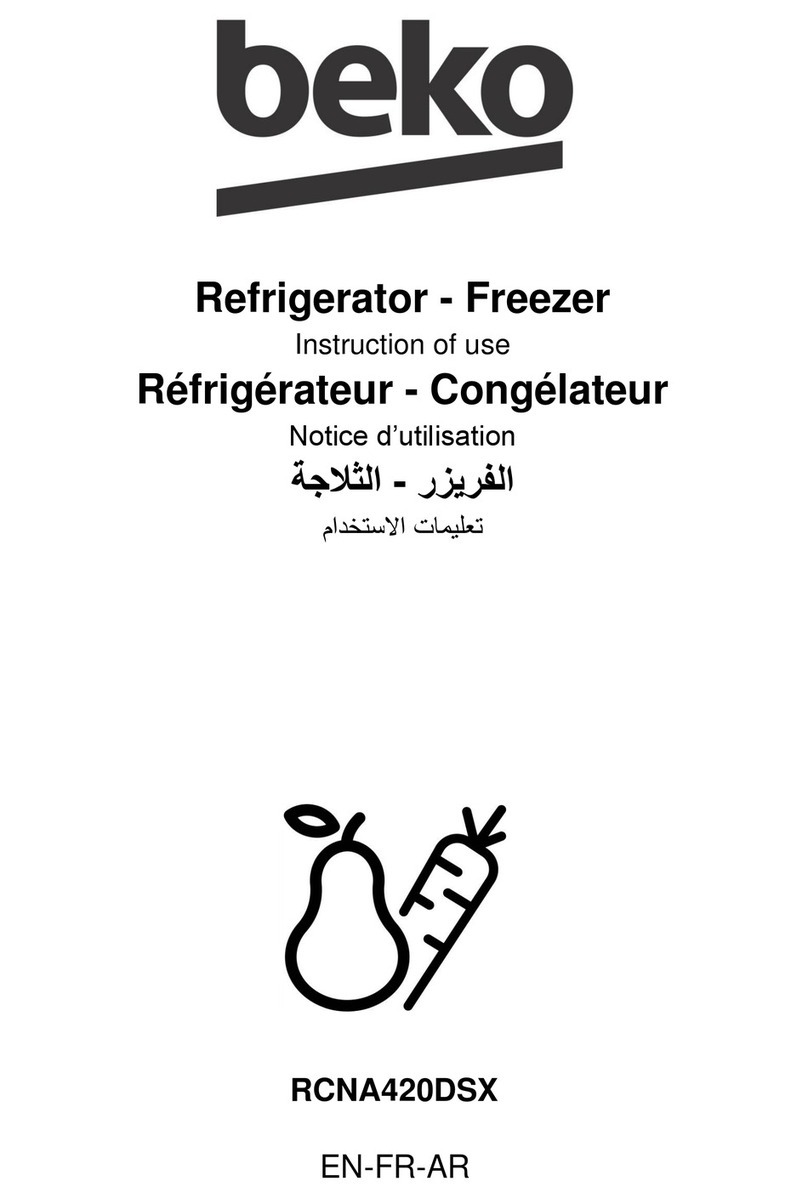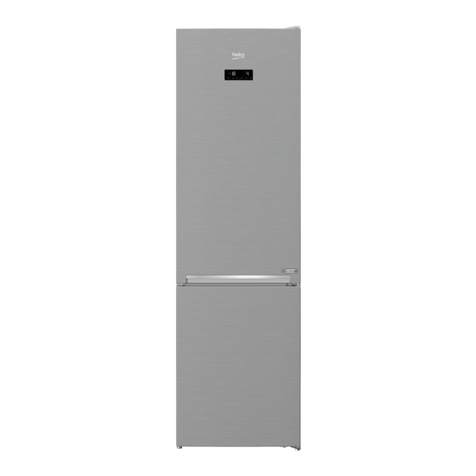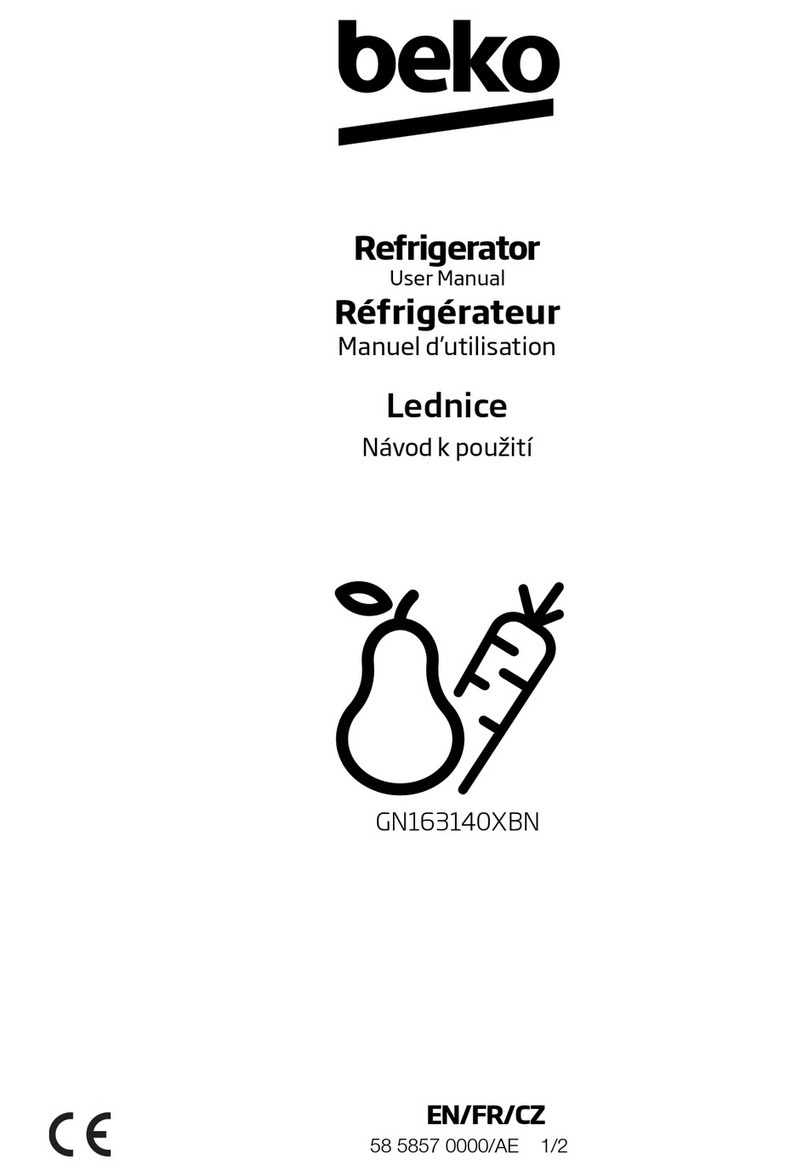
Safety and environmental instructions
5/22EN
Refrigerator / User Manual
flammable refrigerant and air mixture will
accumulate in cases of refrigerant leakage
in cooling system. The required space for
each 8 gr of refrigerant is 1 m³minimum.
The amount of refrigerant in your product is
indicated on the Type Label.
Product must not be installed in places
exposed to direct sunlight and it must be
kept away from heat sources such as hobs,
radiators, etc.
If it is inevitable to install the product close to
a heat source, a suitable insulation plate must
be used in between and the following minimum
distances must be kept to the heat source:
- Minimum 30 cm away from heat sources
such as hobs, ovens, heater units or stoves,
- Minimum 5 cm away from electric ovens.
Protection class of your product is Type I.
Plug the product in a grounded socket that
conforms the voltage, current and frequ-
ency values stated on the type label of the
product. The socket must be equipped with
a 10 A – 16 A circuit breaker. Our company
shall not be liable for any damages that
will arise when the product is used wit-
hout grounding and electrical connection
in accordance with the local and national
regulations.
Product must not be plugged in during
installation. Otherwise, there is the risk of
electric shock and injury!
Do not plug the product in sockets that
are loose, dislocated, broken, dirty, greasy
or bear the risk of getting in contact with
water.
Route the power cable and hoses (if any) of
the product in a way that they do not cause
risk of tripping over.
Exposing the live parts or power cable to
humidity may cause short circuit. Therefore,
do not install the product in places such as
garages or laundry rooms where humidity
is high or water may splash. If the refrige-
rator gets wet with water, unplug it and call
the authorised service agent.
Never connect your refrigerator to energy
saving devices. Such systems are harmful
to your product.
A1.6- Operational safety
Never use chemical solvents on the pro-
duct. There is the risk of explosion!
If the product malfunctions, unplug it and
do not operate until it is repaired by the
authorised service agent. There is the risk
of electric shock!
Do not place flame sources (lit candles, ci-
garettes, etc.) on or close to the product.
Do not climb on the product. There is the
risk of falling and getting injured!
Do not damage the pipes of the cooling
system with sharp or penetrating objects.
The refrigerant that might come out when
the refrigerant pipes, pipe extensions or
surface coatings are punctured causes skin
irritations and eye injuries.
Unless recommended by the manufacturer,
do not place or use electrical devices inside
the refrigerator/deep freezer.
Be careful not to trap your hands or any
other part of your body in the moving parts
inside the refrigerator. Pay attention not to
squeeze your fingers between the door and
the refrigerator. Be careful when opening
and closing the door particularly if there are
children around.
Never eat ice cream, ice cubes or frozen
food right after removing them from the
refrigerator. There is the risk of frostbite!
When your hands are wet, do not touch the
inner walls or metal parts of the freezer or
the food stored therein. There is the risk of
frostbite!
Do not place tins or bottles that contain
carbonated drinks or freezable liquids in
the freezer compartment. Tins and bottles
may burst. There is the risk of injury and
material damage!
